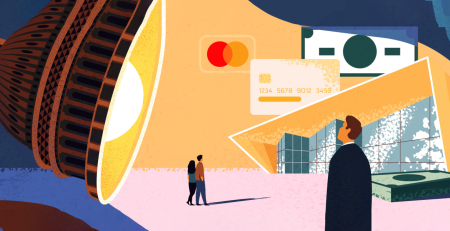Open Banking API Standards
The phrase “open banking standards” refers to the laws and technologies used to make consumer banking information available to outside service providers. There are numerous uses for this data. to supply and maintain services including banking services, mobile and online apps, and more. Governments provided open banking norms and guidelines to make it all possible. We give you with a brief list of open banking rules and application programming interfaces (APIs) standards to watch out for in the coming months and years because compliance, along with security, is the most crucial aspect of the FinTech industry.
What is open banking?
We’ll discuss open banking norms and directives soon, but let’s start with the fundamentals.
Open banking primarily refers to the process of granting access to customer banking data to outside financial service providers. Data like transactions and payment history can be viewed and tracked by them. This is made possible technically through the use of APIs.
What types of information are accessible to these financial institutions? They can view the account holder’s name, the kind of the account, the open date, the currency, and the transactional information (amounts, merchants, spending patterns).
Based on that data, businesses can provide consumers with a range of advice through applications and services. Many clients find it necessary to have access to information on creating and maintaining a budget, receiving spending and income notifications, pricing comparison information, lending choices, and even real-time stock updates (with the option to invest). Consumer profiles, which are created through the use of programs, can be used to provide these functionalities.
Regulations were necessary for the market because the data is so delicate. Open banking guidelines and, more broadly, open banking standards were created to advance, advance society, and safeguard customers.
When the first Payment Services Directive (PSD1) was announced and put into effect, everything got started. The market had even more reasons to pay attention to compliance after the 2018 implementation of the PSD2. But that’s just the start.
What rules apply to open banking currently?
Major open banking directives and regulations in 2022
The PSD may have been the catalyst, but the compliance landscape is expanding dramatically today. It’s the concept of open banking regulation lagging behind market developments. Or should we say markets, given the extreme fragmentation of the financial ecosystem? The following laws have been created in order to monitor events and safeguard data. If you intend to implement an open banking feature for a digital product, you must be aware of them.
The Open Banking Implementation Entity is an essential piece of legislation. It accepted PSD2 and introduced the first iteration of the open banking standard in 2017, having been issued in the UK by the Competition and Market Authority. It gives banks instructions on how to permit an API to access customer information and make payment requests. Obviously with the user’s knowledge and consent.
Comes NextGenPSD2XS2A next. The Berlin Group produced this common open banking API standard. In the entire European Union, it comprises of close to 40 banks, associations, and providers of payment services (EU).
The Hong Kong Monetary Authority also established the Open API Framework (HKMA). This framework calls for collaboration between banks and outside organizations to develop solutions that provide seamless user experiences.
The Monetary Authority of Singapore published a legislative framework called The API Exchange (APIX) (MAS). It was developed to persuade banks to make their systems and data available to other businesses and fintechs.
In Australia, we likewise have a consumer data right. The Consumer Data Right, created by the Treasury Laws Amendment, gives local customers more data ownership. They are now free to decide whatever information they want to give API providers. Sharing information solely for permitted uses is the aim.
Major open banking standards
In addition to the aforementioned open banking directives, we also have open banking standards, which serve as implementation guidelines. The objective is the same, but the parameters differ according to a global region and local market circumstances. Safe and secure open banking systems are essential.
Make sure to abide by the following laws while creating a FinTech app:
- Open Data ATM API specification in Mexico
- API Playbook in Singapore
- Open API Standards in Nigeria
- Unified Payments Interface in India
- The Joint Resolution in Brazil
- The Open Banking Policy in Saudi Arabia
- The Open Banking Framework in Bahrain
- Regulatory Technical Standards (RTS) in the UK
Be careful to keep up with advances in the industry. For instance, the British Financial Conduct Authority (FCA) decided to do away with the 3-month re-authentication requirement in late 2021. Fintechs won’t have to need customers to validate their identities every 90 days going forward. Customers who access account information through third-party providers are required by law to use a strong customer authentication (SCA) solution to verify their identity. Customers were unhappy with this policy, which also caused confusion and high drop-out rates.
Particularly in the context of digital transition, it is crucial. Simple compliance will assist, but it’s not the sole aspect if your organization is encountering difficulties in business development. Chase tried-and-true solutions rather than far-off sparkles in the breeze. Work with businesses that are aware of what is required for market success if you want to transform your company. Technology is one thing, but putting policies into place is another.
Likewise, keep an eye on programs like the Open Banking Standard that the Open Banking Working Group introduced in the UK (OBWG). This endeavor specifically aims to help clients comprehend their account options and the financial decisions they make.
Other intriguing and significant open banking standards exist as well. Some of them are still being created.
The Free Financial Market (OFX). For getting access to financial data, this is a leading banking standard. More than 7,000 financial institutions and other suppliers use it. It enables the interchange of financial data. It supports the OAuth tokenized authentication scheme, which is an interesting information.
API for Durable Data (DDA). This one was developed by the Financial Services Sharing and Information Sharing and Analysis Center working group (FS-ISAC). The objective is to enhance OFX-related data interchange.
Convenient Payment Services Access (CAPS). This case is quite intriguing. It is an alliance of parties involved in the technological, commercial, and administrative problems brought on by PSD2 across the continent of Europe. The majority of participants are problem solvers who try to develop a framework for the future. Traditional banks, fintech companies, businesses, and service providers are some of them.
Why are open banking directives important?
Contrary to popular opinion, they need not only have a regulative nature. These regulations were created and are updated virtually year to assist civilize the market and safeguard the interests of crucial customers.
These standards:
- strengthen consumer privacy and control over data
- expand financial inclusion (especially in emerging markets and in Africa)
- improve rules for competition
- increase consumer choices
In a nutshell, FinTech players collaborate to compete on moral grounds. These laws are only proactive regulators and are not oppressive. Everyone benefits from them. Can your application compete on an equal footing? is the real query. The creation of APIs and your willingness to scale the firm in response to long-term market developments are key factors.












Leave a Reply